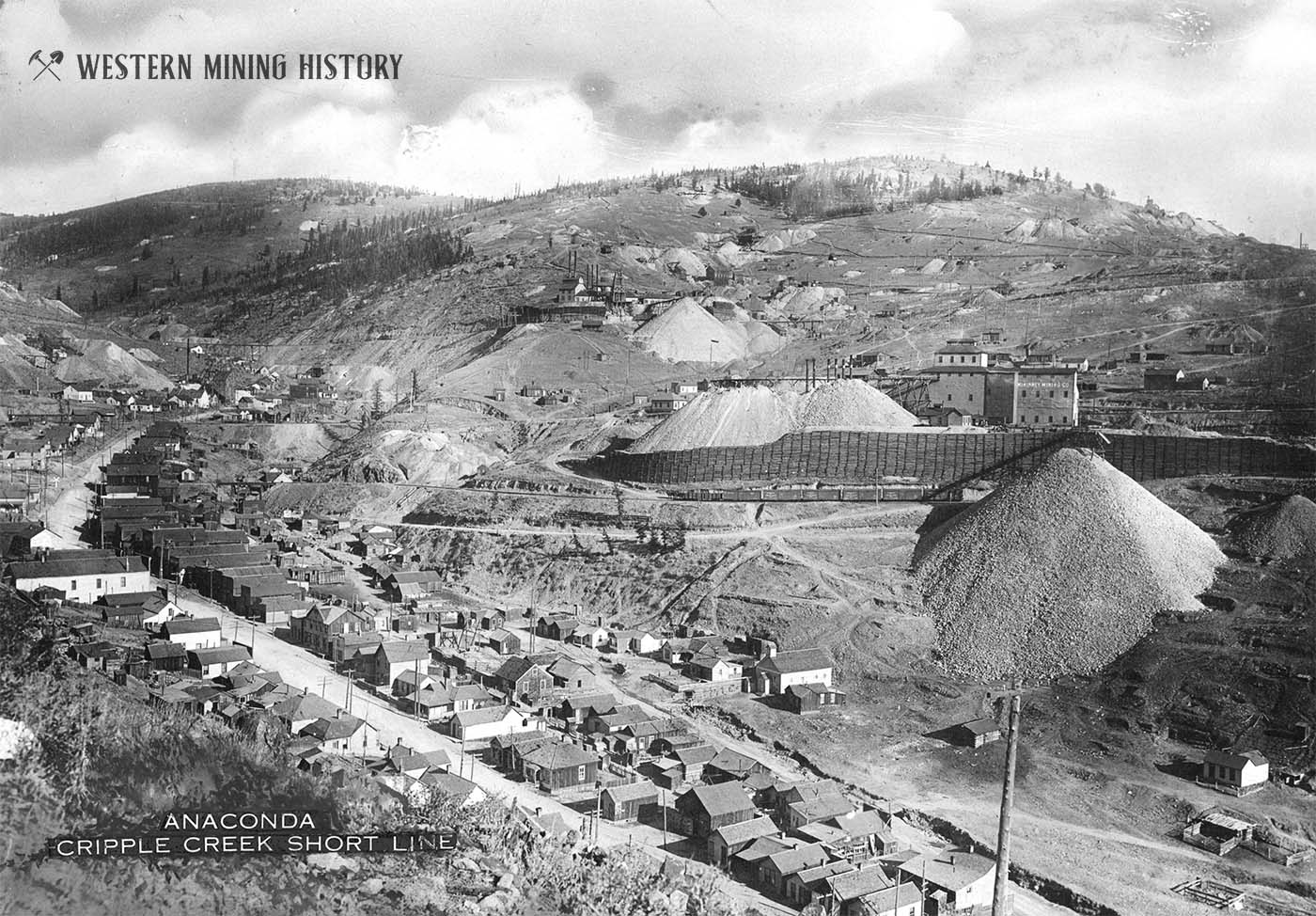Anaconda History
By Jan MacKell Collins
As the Cripple Creek District developed during the 1890s, thousands of miners flocked to the region seeking fortune. Within an incredibly short time, hundreds prospect holes dotted the landscape. In one area, located roughly halfway between Cripple Creek and Victor, the body of “a female aborigine” was unearthed. The remains were most likely those of a Ute Indian, since those native Americans once favored the area as a summer hunting ground. The area where she was found became known as Squaw Gulch.
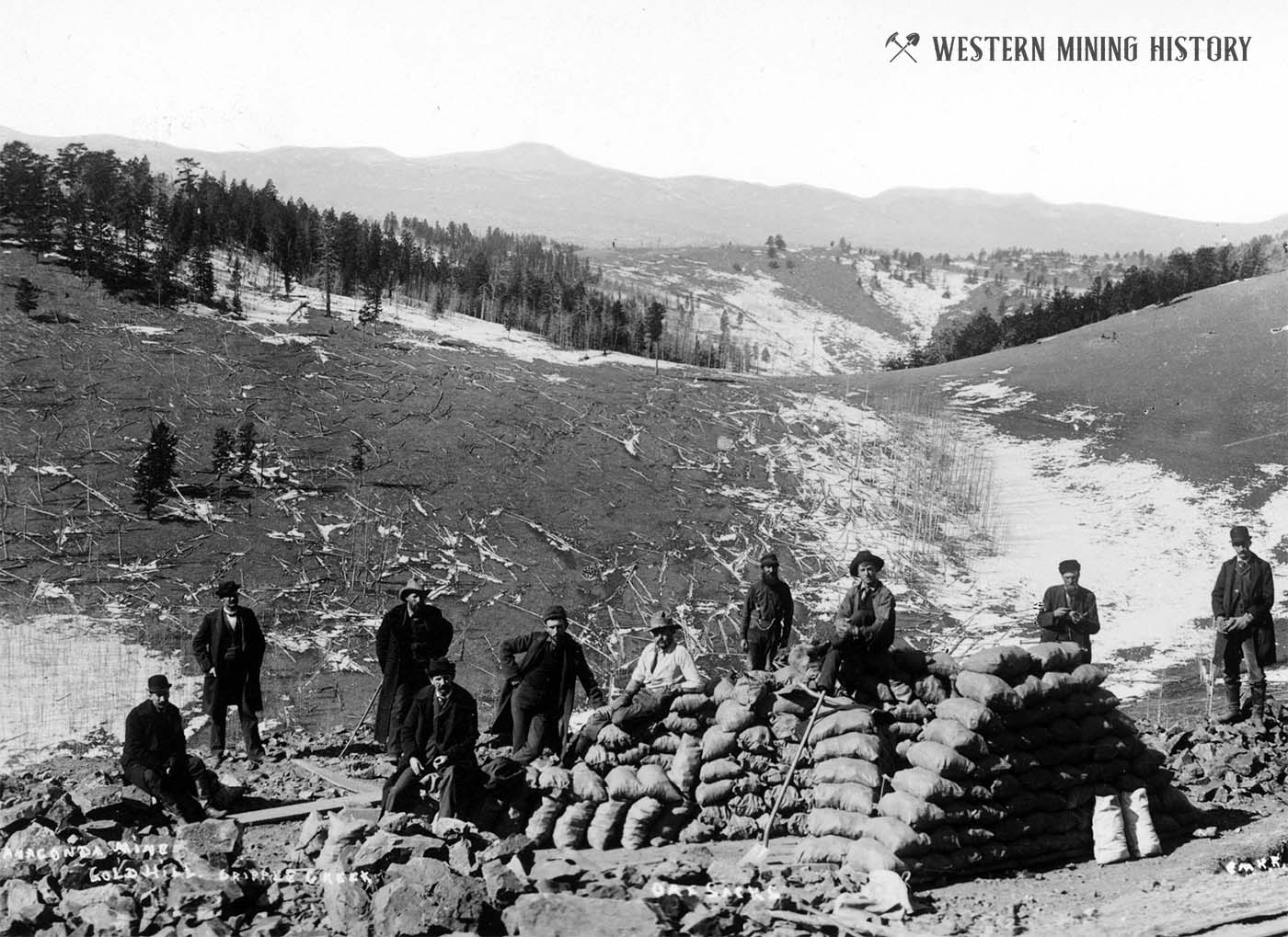
By about March of 1892, the Anaconda Mine above Squaw Gulch was producing $50,000 in gold each month. The company was officially incorporated on June 21. David Moffat, the famed Colorado railroad tycoon, was president. The mine was not without its problems as principle officers of the company fought with each other over who got what, and the mine was shut down at least once. While the Anaconda struggled, other good producing mines followed, including the Mary McKinny just a few months later, and the Doctor Jack Pot and the Morning Glory in 1893.
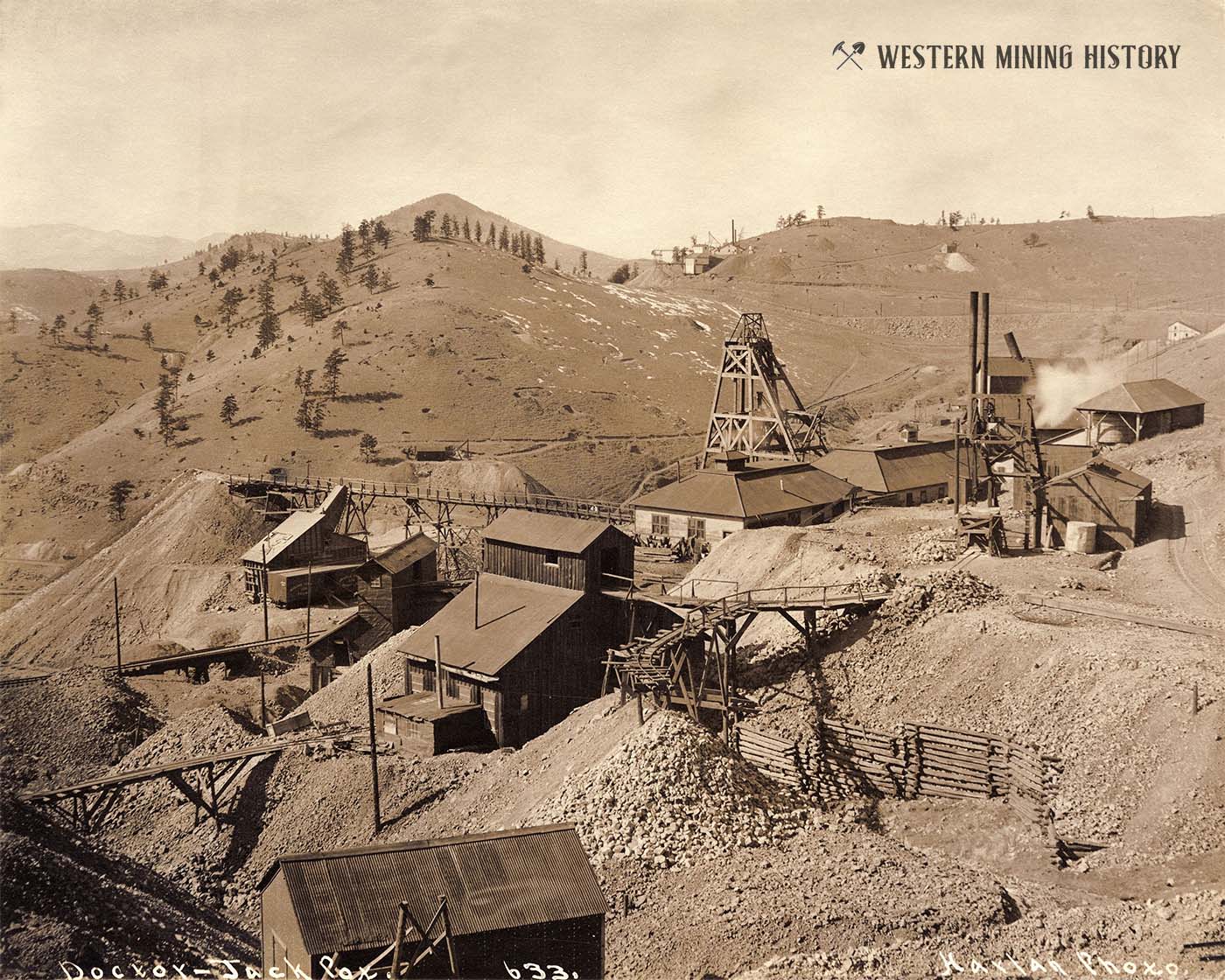
Along Squaw Gulch, a series of small towns formed. The two earliest communities were Mound City and Barry which sat on either side of a wagon road traversing Squaw Gulch. Quite suddenly, a new camp emerged in Squaw Gulch, at the foot of Gold Hill. Without much aplomb, the Aspen Daily Times of May 20, 1893 simply mentioned that the “town of Anaconda, near Cripple Creek, has taken out incorporation papers.” At least the Daily Times was impressed by the town newspaper which began two months later. “The Anaconda Herald is a new candidate for newspaper favors at Cripple Creek. It is very ably edited by A.J. McNasser.”
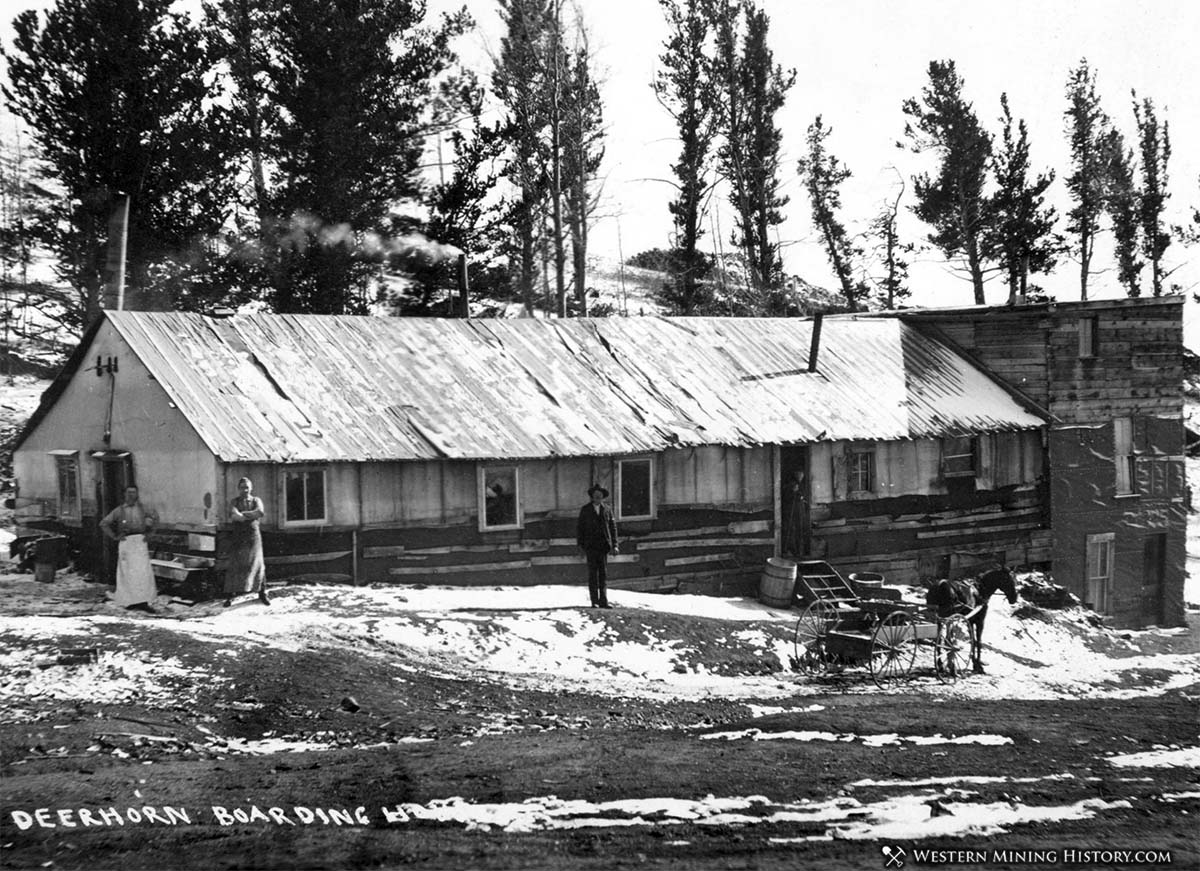
It was not long before there was some news to report. On an August night in 1893, Larry Cavanaugh ended an all night drinking spree by coming home, knocking his wife to the floor and threatening to cut her throat. He also threatened to kill his brother in law, George Cosen. Mrs. Cavanaugh managed to escape to Cosen’s house. On her heels was her husband, who kicked in the door and went after Cosen with a revolver. Cosen “picked up his rifle and shot the intruder dead,” reported papers throughout Colorado. The news said Cosen was arrested, but that he would most likely be released.
Indeed, Anaconda had blossomed practically overnight into a real town with the accompanying violence of any western town. The 1893 directory lists Anaconda’s first mayor as Dr. A.A. Smith, with trustees consisting of U.G. McCrackin, James A. Doyle, Chas. A. Keith, J.C. McKenney, F.C. Hathaway and W.M. Armstrong. A second newspaper, the weekly Mining Standard run by W.A. Bray, soon replaced the Herald. Hotels, drugstores, groceries, physicians and lawyers put out their shingles.
Three saloons—Good’s Place, Mayer & Cook and Page & Allen’s X 10 U 8 sample room—kept the blue collar workers happy. The Anaconda Dance Hall and the Barry Club also provided entertainment. There also were churches, a school and a jail. There was even a music teacher and dressmaker living in town. Not bad for a town of only 200 people.
In December of 1893, Anaconda managed to snatch the post office from, and absorb, the nearby town of Barry. Another community, Mound City, was absorbed as well. The Anaconda post office officially opened on December 7, 1893. M. Lehman, who also ran a “gent’s furnishings” store, was postmaster.
Barry resident Leslie Doyle Spell remembered the small jail at Anaconda, a two room affair built of rock from the nearby creek bed and filled with mortar. On a night, temporary marshal Tom Flanagan jailed a miner known as “Big Kelly” for being drunk. Flanagan had installed his prisoner and was playing poker when Big Kelly suddenly appeared at his elbow. “Tom whirled and said: ‘I thought I put you in jail,; whereat Kelly answered: ‘You didn’t expect to keep a hardrock miner in a jail like that, did you?'” It turned out that some local children, including Spell, had found an old knife and given it to Kelly to dig his way out through a weak place in the mortar.
Flanagan duly marched Kelly back to the jail and made him crawl through the hole, telling him to stay put or the marshal “would come back and give him a good licking.” Kelly stayed put for the rest of the night. Spell recalled that many years later he was telling this story in Bisbee Arizona. “An elderly man spoke up,” he remembered, “and said, ‘That’s a true story, men. I was playing poker with Tom at the time.”
Unlike Altman and other places in the Cripple Creek District, Anaconda seemed rather unaffected by the labor strikes of 1893-94. Even in Squaw Gulch, there were few places for miners to build a stronghold like they had at Altman. Rather, Anaconda’s miners seemed a bit more open to—or afraid of opposing—owners of the Anaconda mine who wanted them to work an extra hour for the same pay. In March of 1894, it was announced that the Anaconda Mine was one of the few who would reopen and hire anti-union employees to work there. While not all of Anaconda’s miners were for the change in policy, when the strike was settled a few months later citizens simply resumed their daily lives with little trouble or comment.
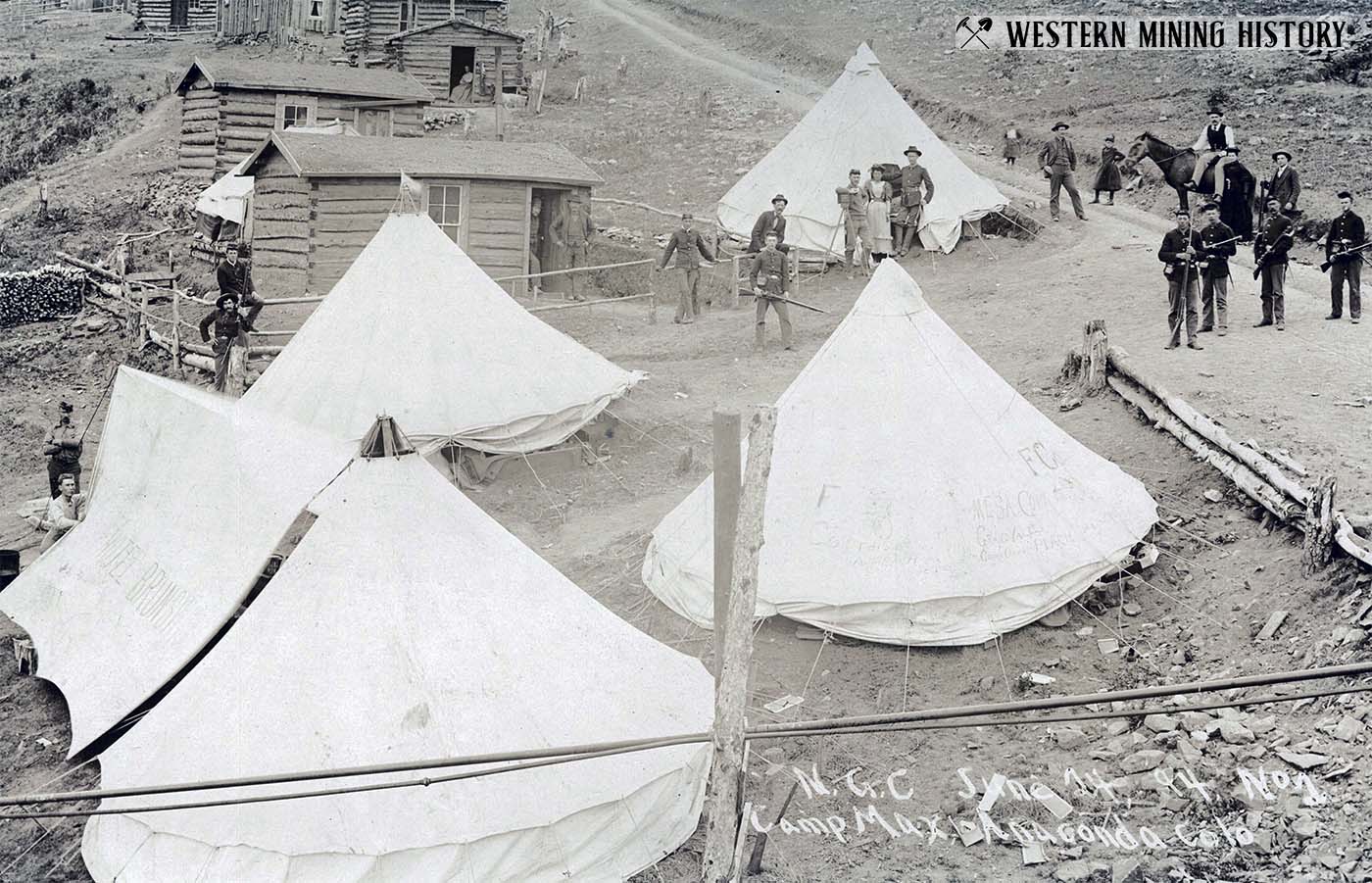
In 1894, Anaconda was becoming an important part of the Cripple Creek District, and incorporated. The population consisted of about 1,000 people “who enjoy their cosy [sic] life snug in the embrace of the hills,” according to an 1894 directory. More billiard halls and saloons were now present, but more respectable businesses such as the Delmonico and Keystone Restaurants, hardware stores, attorneys, doctors, and others outnumbered them.
As Anaconda grew, both the Midland Terminal Railroad and the Florence & Cripple Creek Railroad were running a most heated race to reach the Cripple Creek District. The F. & C.C. won, with a passenger train chugging into nearby Cripple Creek on July 1, 1894. The next day the train continued on to Anaconda, only to derail and cause a spectacular crash close to town. Two passenger coaches and the baggage car went over the edge of a trestle. Twenty one people were injured, and W.G. Milner of Leadville was killed.
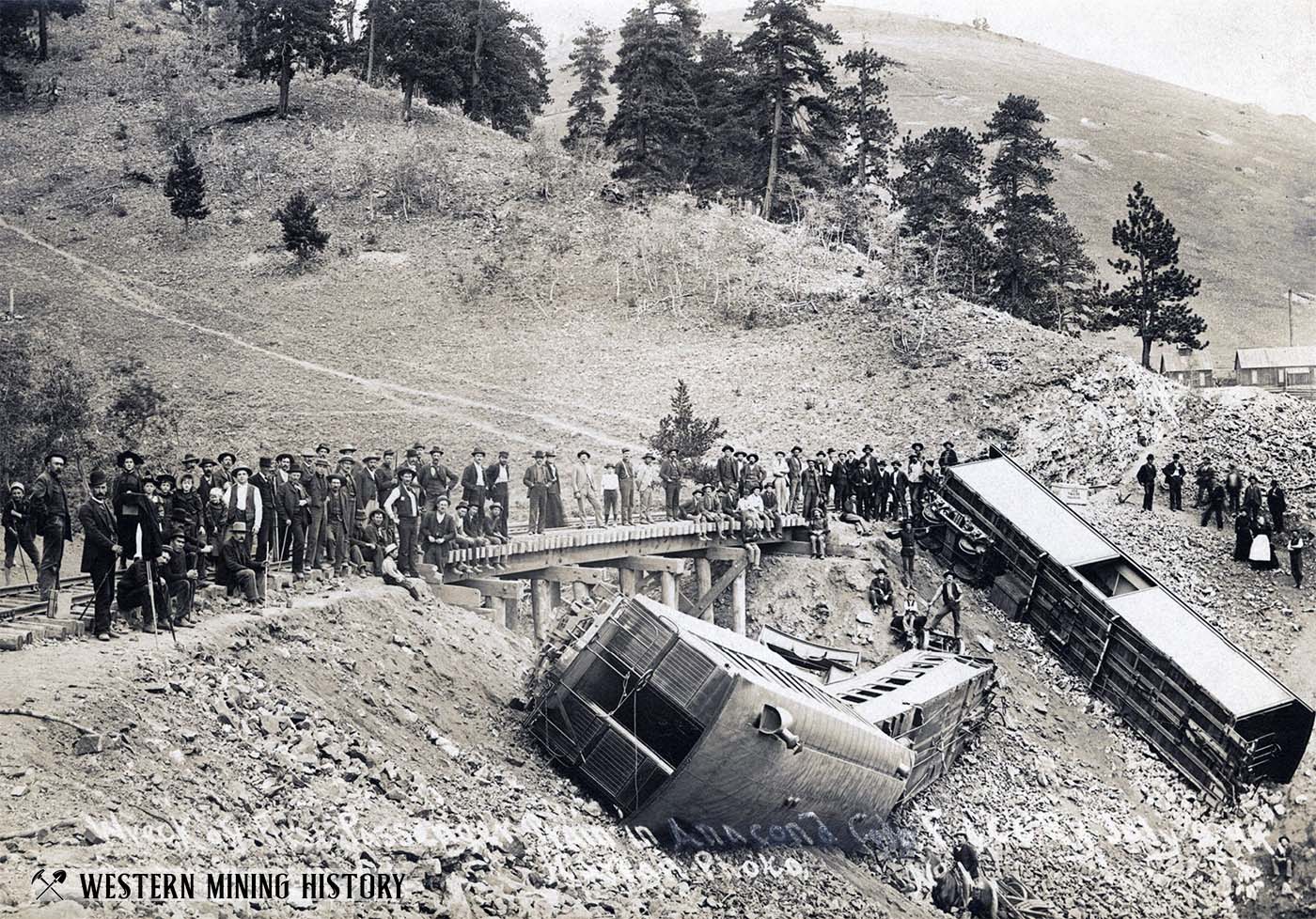
By 1895, upwards of 2,000 train passengers and visitors passed through Anaconda each day. Enter Jimmy Doyle, a former fireman, would soon to strike it rich at the famed Portland Mine and become a future mayor of nearby Victor. But his beginnings in the Cripple Creek District consisted of advertising his assaying services in newspapers throughout 1895. The city was still growing, and in May, the Blue Bell addition was added for more housing. Now, Anaconda even had a baseball team, and by November, the Midland Terminal Railroad tracks had reached one side of town.
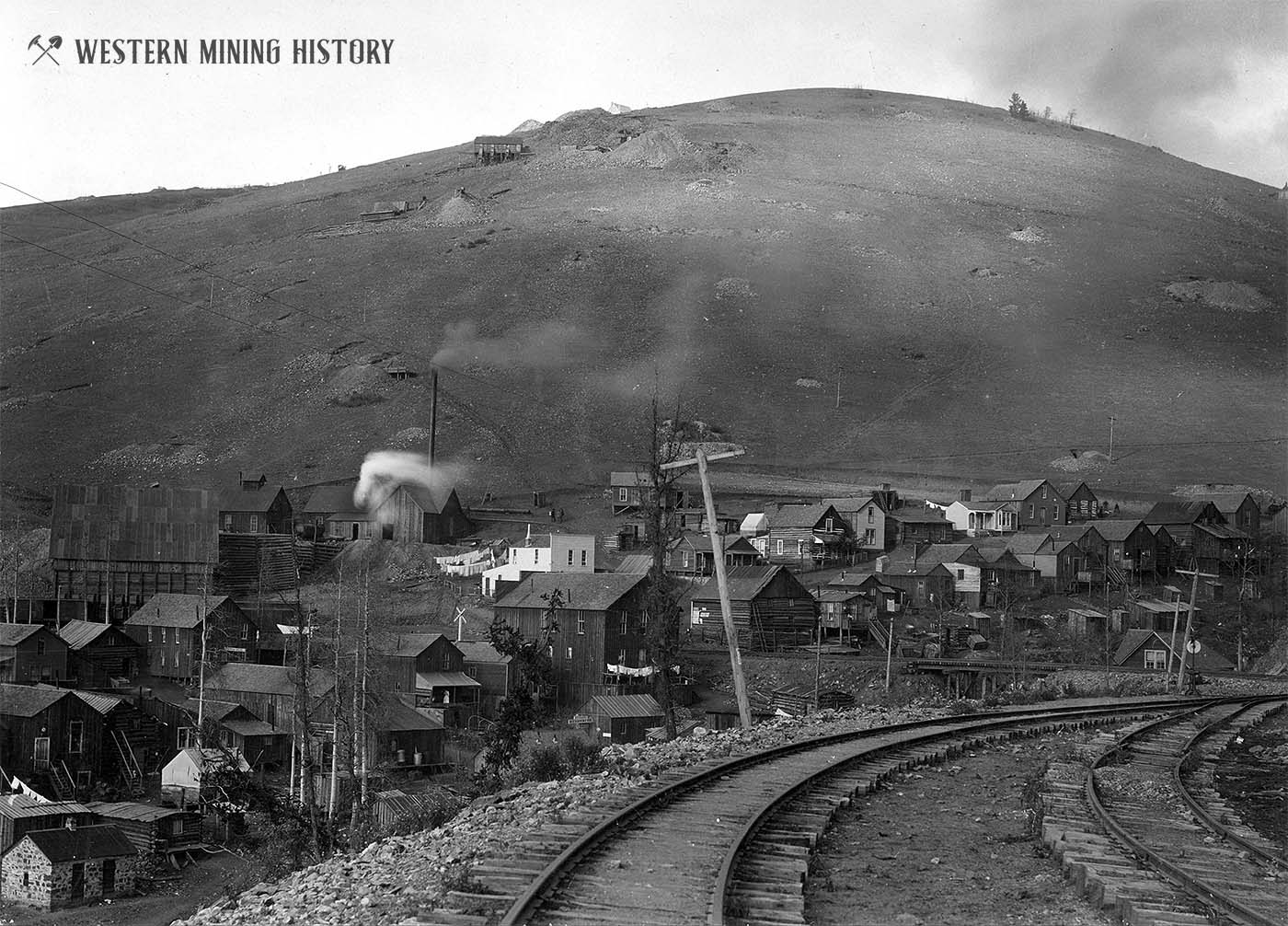
Prizefighting became a popular pastime in Anaconda beginning in 1896, when newspapers announced that Billy Woods and Jim Williams would be duking it out for a purse of over $3,000. The fight was forgotten a few weeks later, however, when the city of Cripple Creek just a few miles away burned in not one, but two fires. Refugees from the fire crowded into Anaconda, tripling business at the post office. In the months following the fires, after the temporary visitors had returned to Cripple Creek, the Cripple Creek District directory of 1896 guessed there were roughly 1,800 people living in Anaconda.
City businesses now included a blacksmith, drugstore, general merchandise store, laundry services, a livery, a meat market, shoemaker, two barbers, two confectionaries, two dressmakers, two dry goods stores, two physicians and two restaurants. There were also four grocery stores, and six bars to quench the thirst of locals. Guests of the town had two hotels and eight boardinghouses to choose from. There was even a justice of the peace and a notary public. Around town were about twenty six mines, plus a sampling works, stamp mill and three assayers.
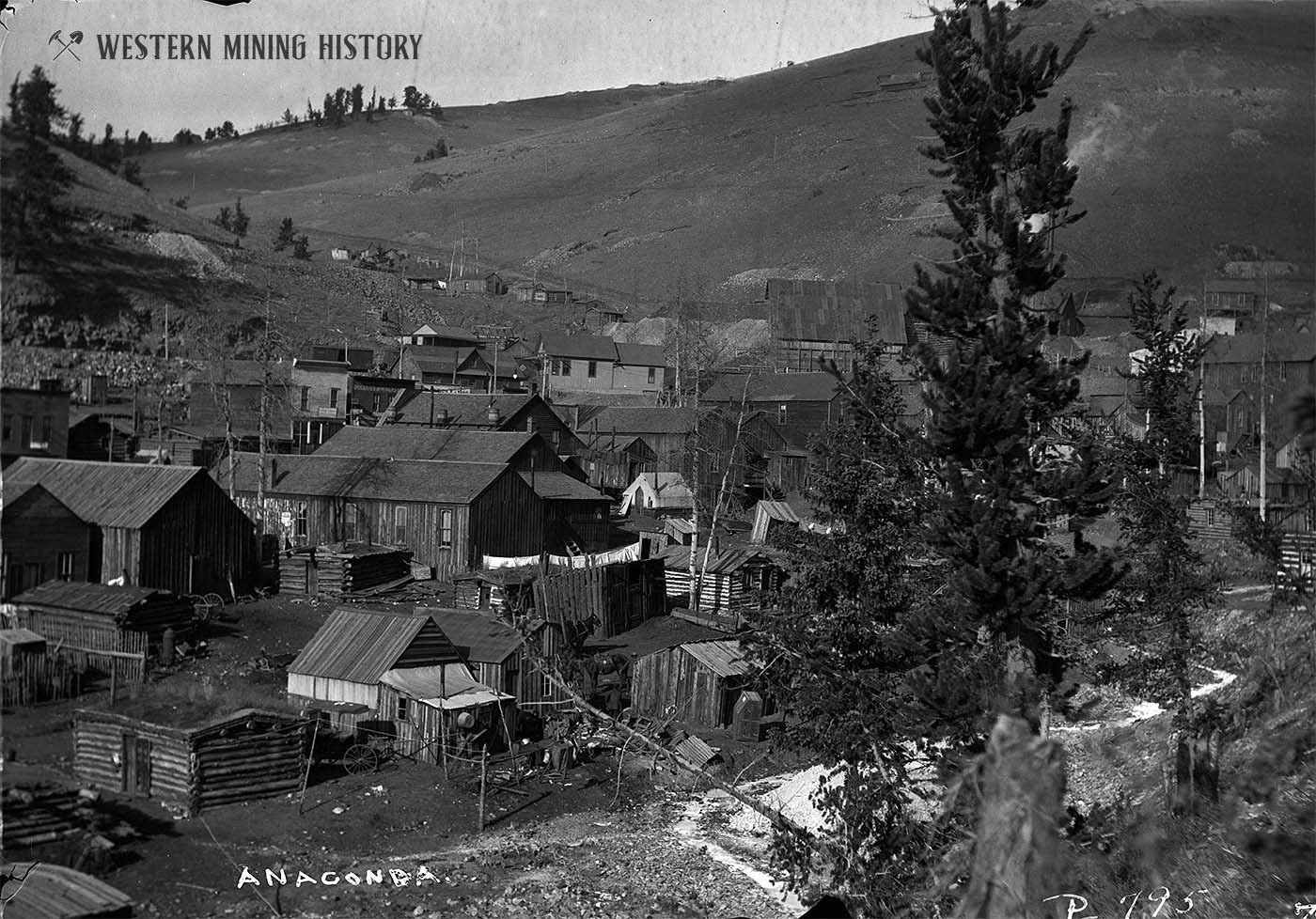
Also in 1896, a new newspaper, the Assayer, was met with approval. “Mr. [C.P.] Brooks, it is needless to say, knows how to make a bright and newsy paper,” commented the Leadville Herald Democrat. The article proved to be an understatement, for the lively Mr. Brooks kept readers entertained with plenty of news, and a good dose of editorial comment to boot.
On January 13 of 1898, the Greeley Tribune noted that “Charles P. Brooks, who was reported a few weeks ago to be in a dying condition at Anaconda” had also become editor of the Cripple Creek Prospector newspaper in Cripple Creek. Greeley was, incidentally, Brooks’ former hometown. The Elbert County Banner also had something to say about Brooks’ character: “The editor of the Anaconda Assayer has been having a high old time with the mayor and town board of that camp. But he seems to be plenty for them even they do pummel him around and draw guns on him when he attends town council.”
Brooks’ antics aside, life at Anaconda throughout the late 1890’s remained rather quiet. Newspapers reported on a $250 robbery at John Knox’s saloon, the accidental deaths of various miners and a foiled ore robbery attempt at the Doctor Mine in 1897. Six trains were still coming through town daily. And in August Dr. Coleman, a local druggist, was digging a cellar behind his home and hit a rich gold vein.
Indeed, things were very bright for Anaconda at the turn of the century. The Cripple Creek Morning Times‘ New Year’s Day edition of 1899 had much good to say about the town, calling Anaconda “a well governed little city with no debt and where the people are prosperous and happy.” The writer went on to claim that “There is no place in the state more picturesque, and as a ‘summer camp’ it has no equal.” Compliments were showered upon the peace-loving population as well. “The old-time notion that a mining city must in the nature of things be ‘tough’ does not obtain in Anaconda,” the paper went on, emphasizing the point by mentioning a “splendid” school system with over 400 students.
By 1900 the Anaconda Mine was a major producer. The town proper had become the fourth largest in the Cripple Creek District, even as the population remained at around a thousand residents. Even so, Anaconda was still considered a “young” city. The impressive downtown area spanned two blocks with false-fronted buildings housing churches, hotels, lawyers, an optician, pharmacies, physicians, saloons, stores and a nice, white wood-framed school house. Residents also enjoyed telephone service.
The Anaconda School’s principal was E.E. Morris. Nellie Riggs, Maud Sheldon and Alida Colwell were employed as teachers. There was also a volunteer fire department at the Town Hall. Irving Douglas was postmaster. Baptist, Methodist and Catholic Church.
Anaconda unwittingly became home to a handful of people who eventually became famous in their own right. One of them was Josiah Roberts, who was ten years old when his family lived in town in 1900 (some websites claim Roberts was born in Anaconda. In 1890, however, neither the town or the Cripple Creek District existed yet. Roberts’ World War I draft registration verifies he was actually born in Rockvale, Colorado). By 1920 Roberts had moved to Los Angeles, where he went to work for motion picture companies. When he died in 1971, he was noted as a cinematographer who had worked on the films “White Shadows in the South Seas” in 1928 and “Eskimo” in 1933.
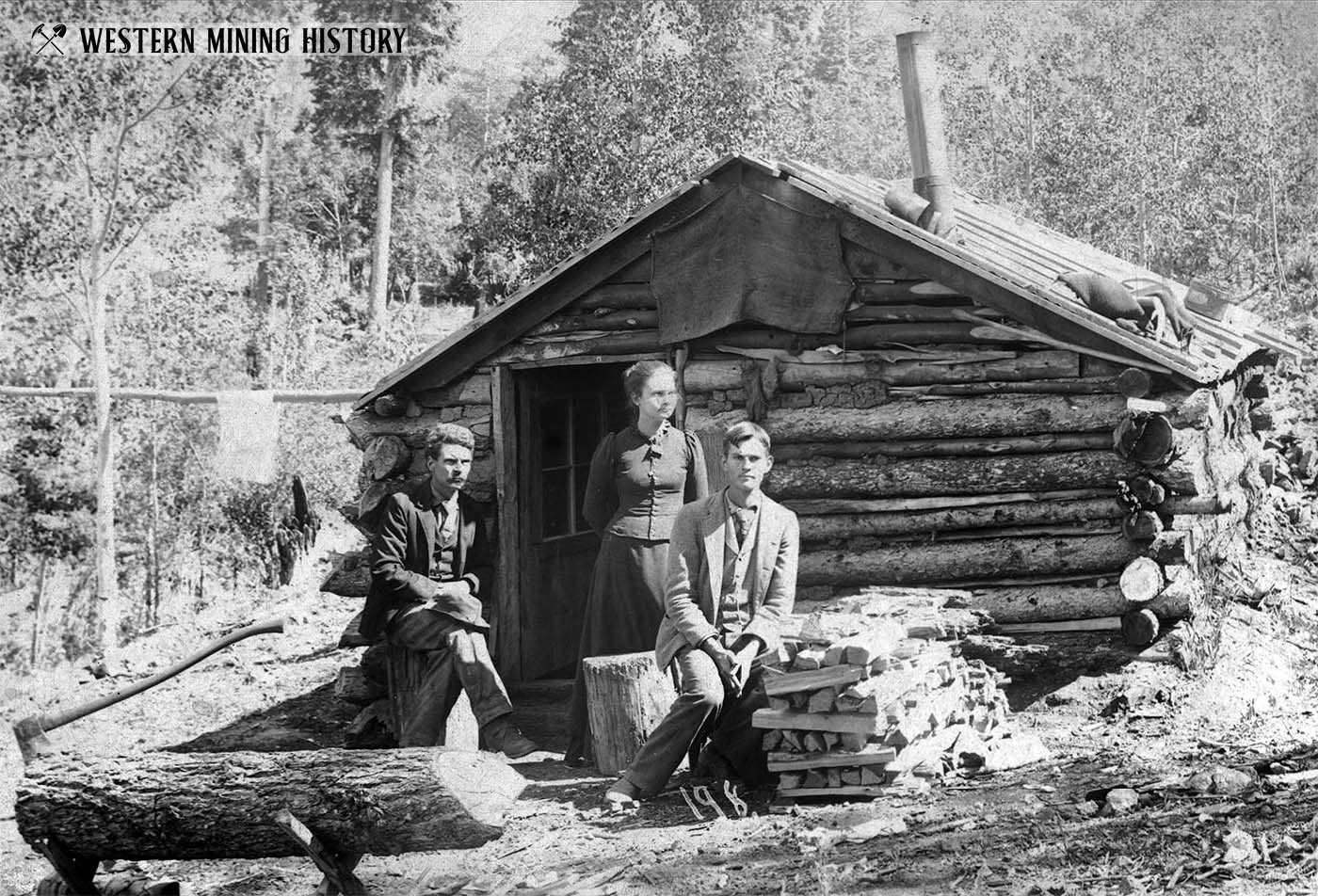
Other famous residents included Judge Melvin B. Gerry and Dr. Susan “Doc Susie” Anderson who became citizens as Anaconda swallowed up Mound City and Barry, respectively. But the woman who really turned heads at Anaconda was the later-known speakeasy queen, Texas Guinan. Mary Louise Cecelia Guinan, as she was then known, came to town with her mother in 1902. Mother and daughter were there to visit Mrs. Guinan’s sister, Mrs. Margaret Conley.
During her extended stay, Tex began playing the organ for the local Sunday school. But she also began dressing a little too modern for the standards of young ladies of Anaconda. Not only were her outfits a bit too revealing, but she also wore rouge and makeup. Next, she lined up a series of suitors, whom she would date once or twice before casting them aside. Those who complained were given the same response that would soon be Tex’s tradmark saying: “Oh, you poor sucker.”
It was probably at Anaconda that Tex met John Joseph Moynahan. The 1900 census verifies that John was in town visiting his uncle, John O’Brien. Later that year, Moynahan was hired as a cartoonist with the Rocky Mountain News in Denver. He also may have invested in real estate in Cripple Creek, where the now-defunct Moynahan Street was named for him.
By 1904 both Moynahan and Tex were in Denver, where they married on December 4. The couple later divorced and went on to marry others; in the meantime, Texas Guinan eventually made her way to New York where she found work as a chorus girl and started appearing in short films starting in 1917. She also ran a series of successful nightclubs and speakeasies during the prohibition era. The name of one of them, the Culture Club, was later used by a popular British band during the 1980’s. Tex appeared in more than thirty films before she died in 1933. A film, “Incendiary Blonde”, profiled her lively and interesting life in 1945.
Anaconda boasted “good schools and several churches” in 1902, with a population of about 1,000. George Horton was mayor. Notably, there was no pastor at the Baptist Church, nor the Methodist Episcopal Church, when the Cripple Creek District Directory was published. Instead, Reverend Father Victor was overseeing the Catholic Church.
Three lodges, the I.O.O.F. Ivanhoe Rebekah Lodgw No. 60, Miners’ Union No. 21 and White Swan Council No. 31, D. of P., were available to members. Other businesses included a wagon maker, a drugstore, a dry goods, a boardinghouse, a hardware store, a meat market, one tailor, a doctor, one realtor, one shoe store, a stationary store, two restaurants, two barbers, two cigar stores, three assayers, three fuel and feed stores, three saloons, and four groceries.
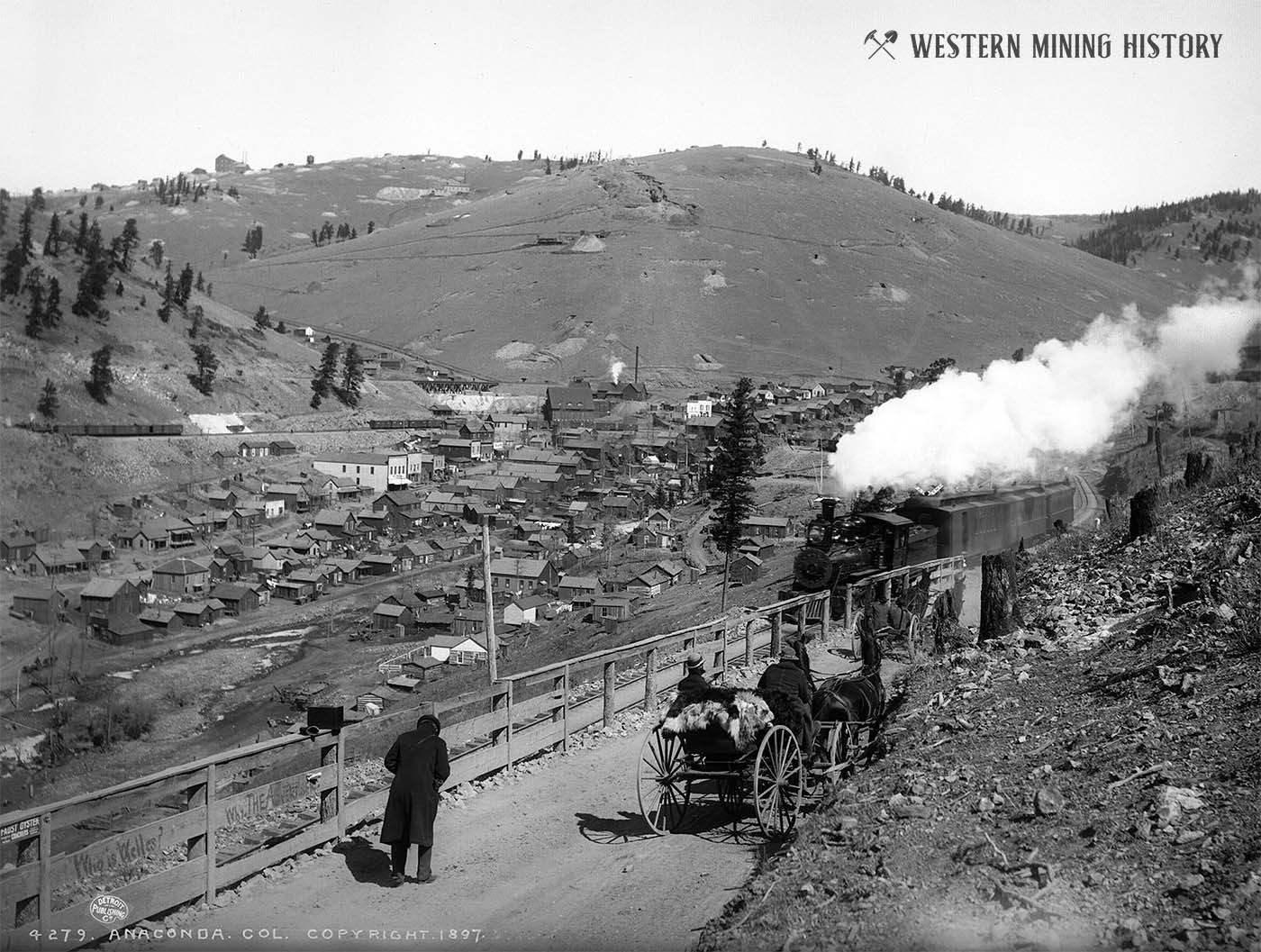
Like many towns across the west, Anaconda suffered a fire that was almost the town’s undoing. On November 11, 1904, a fire began at Nelson’s Grocery at 11:30 p.m. The flames had been growing for some time before they were discovered by Edwin Irwin. News of the fire was reported as far away as Los Angeles, where the Los Angeles Herald warned the town was “in danger of total destruction by fire.” One block of the downtown had already burned, with many other in danger.
A lack of water pressure combined with strong winds spelled disaster, even after a bucket brigade was formed. Anaconda’s volunteer fire department finally called Cripple Creek for help. Many buildings, including the city hall, were dynamited in an effort to stop the flames, but in the end every building south of the railroad tracks through town burned. Only one of them was insured. Newspapers guessed the damage to be between $50,000 and $60,000.
In spite of nearly being burned out altogether, Anaconda did survive for a few years more. The town still had “good schools and several churches” in 1905, and the Cripple Creek District Directory for that year did offer this disclaimer: “A large portion of the business section of Anaconda was recently burned and owing to its nearness to the city of Cripple Creek there is considerable doubt of its being rebuilt.” Nonetheless, the population still hovered around 1,000 people.
Lyman Cornwell was mayor. Two of the three churches had no pastor. There were, however, still three lodges surviving. Businesses included one cigar store, a drugstore, one dry goods, one saloon, one shoe store, two physicians, two grocers.
Anaconda would continue to downsize in the coming years. There were 130 residents left when the post office closed on March 31, 1909. In 1911 the post office reopened during a small surge in mining, and 200 people called Anaconda home in 1912. Only a confectionary store and a grocery, however, represented the business section. Five years later, the post office closed a final time.
By 1920, any remaining residents of Anaconda were listed as part of the nearby town of Victor in the census. A few mines did continue to survive around Anaconda. One of them was the Mary McKinney, which finally closed in 1953 after producing $11 million in Gold.
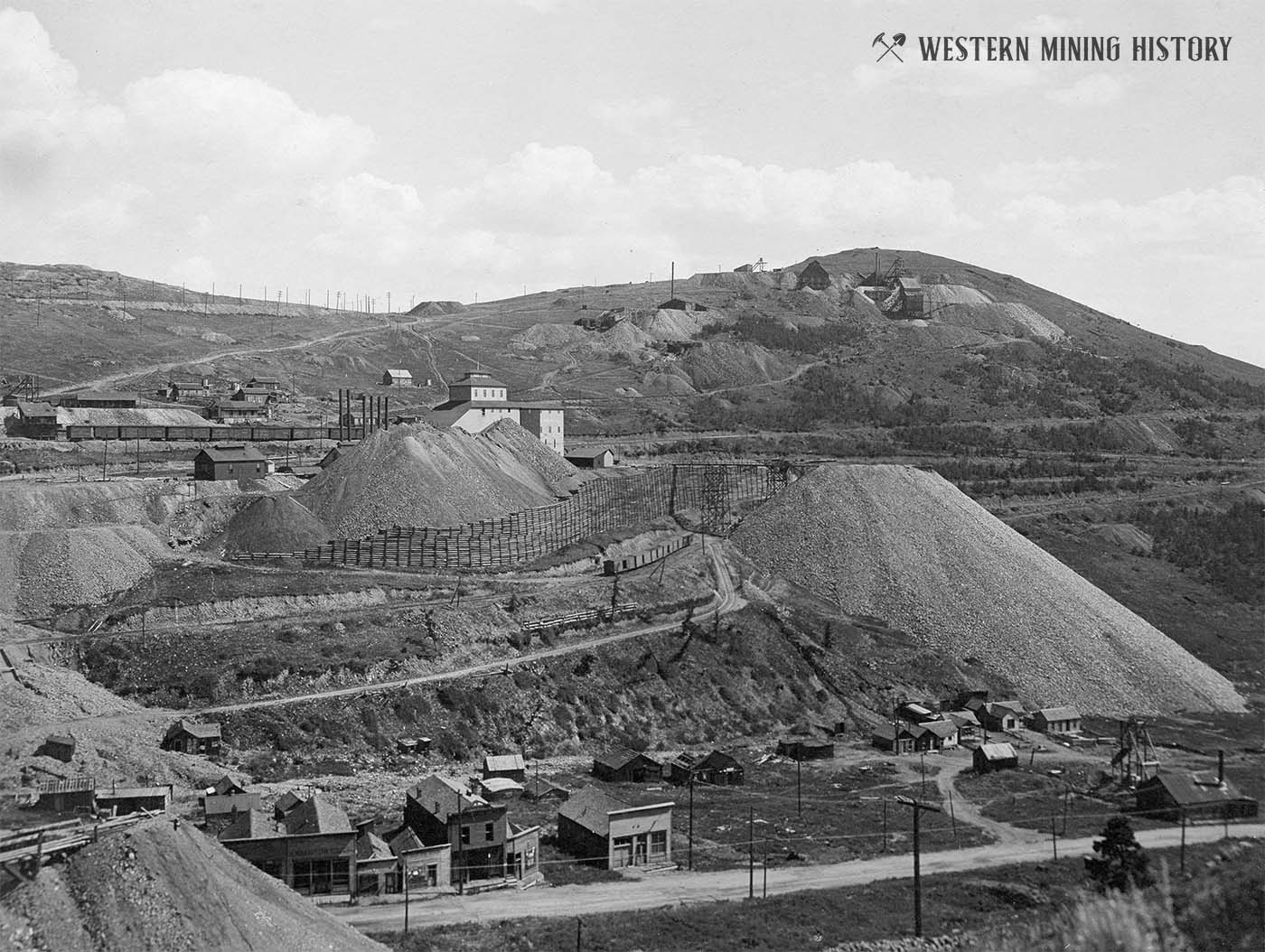
For years, Anaconda’s main street was an empty dirt road with a few buildings scattered about. The Mary McKinney’s huge cribbing paralleled the highway. In Squaw Gulch, only faint remnants of Barry and Mound City could be seen, including the jail. Beginning in 1967, the Cripple Creek & Victor Narrow Gauge Railroad in Cripple Creek brought visitors on a four mile scenic tour from Cripple Creek to Anaconda. The trip dead-ended at the old blacksmith barn for the Mary McKinney, one of the few relics left of Anaconda. A year later, the CCVNG recovered the former Midland Terminal Depot at Bull Hill and moved it to their property in Cripple Creek.
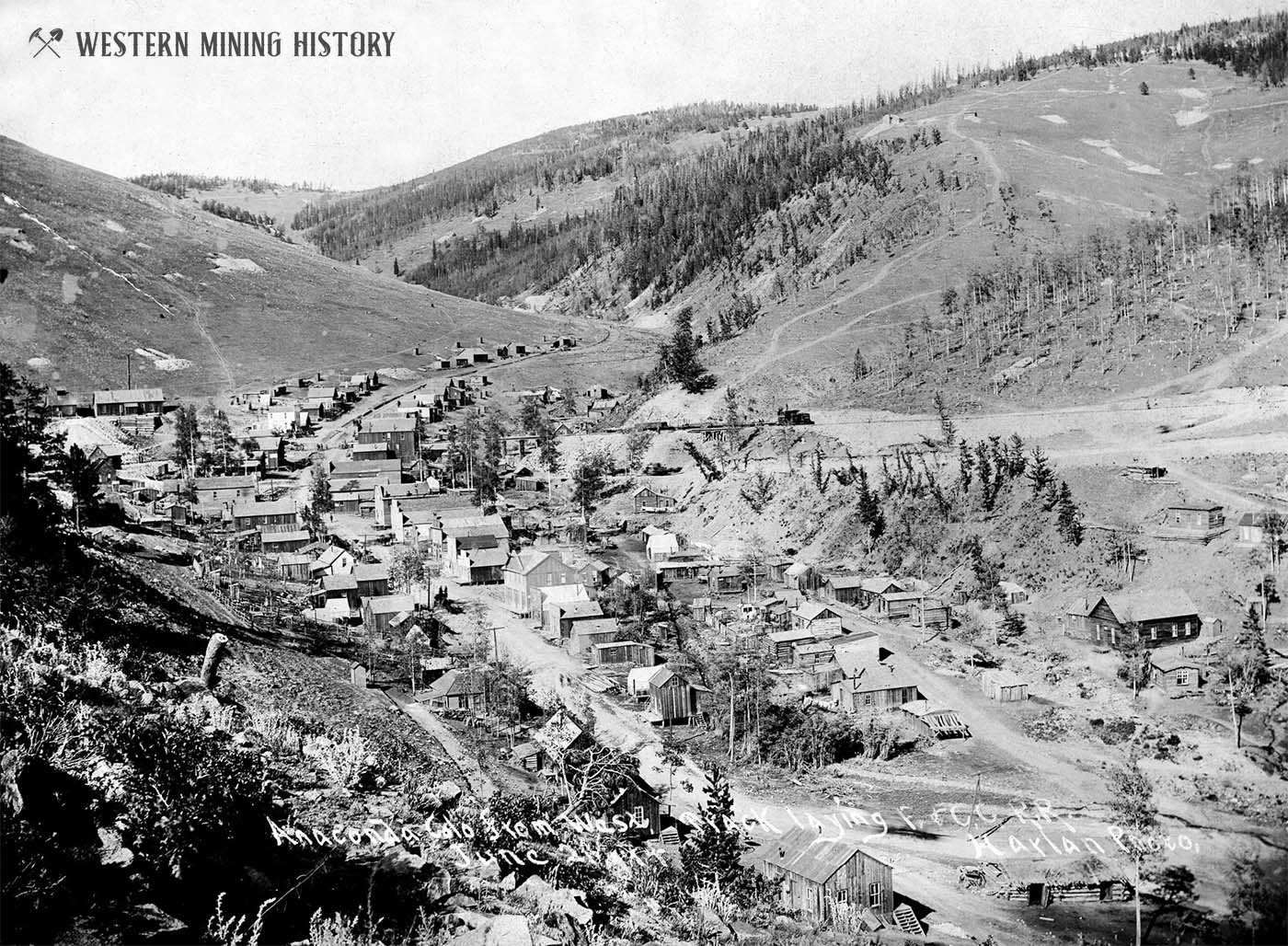
Anaconda remained a highly popular spot for history buffs and ghost town hunters. Tragically, however, in April of 1984 Anaconda made the news when 23-year old Wayne Tease, of Colorado Springs, suffered a fatal fall down an old mine shaft at the Mary McKinney. Due to the depth of the shaft, one thousand feet, authorities could do little to retrieve the body short of slinking a camera down the shaft to identify Tease. The only thing his family could do was erect a small memorial to him at the shaft where he died.
Over time, the story took on some interesting twists. It took Tease’s mother fourteen years to obtain a death certificate for her son. Then in 2011, it was discovered that modern mining operations by the Cripple Creek/Victor Mine were slated to cover the shaft. Although the mine offered to move the memorial, the family objected since the shaft was considered by them to be a grave for their son. After negotiations which lasted a year or better, and with no law to stop them, the mine proceeded with their plans.
Today there is barely anything left of Anaconda, nor the little valley below it which once led to Shelf Road, which is still used to access towns south of the Cripple Creek District.
A Tour of Colorado Mining Towns
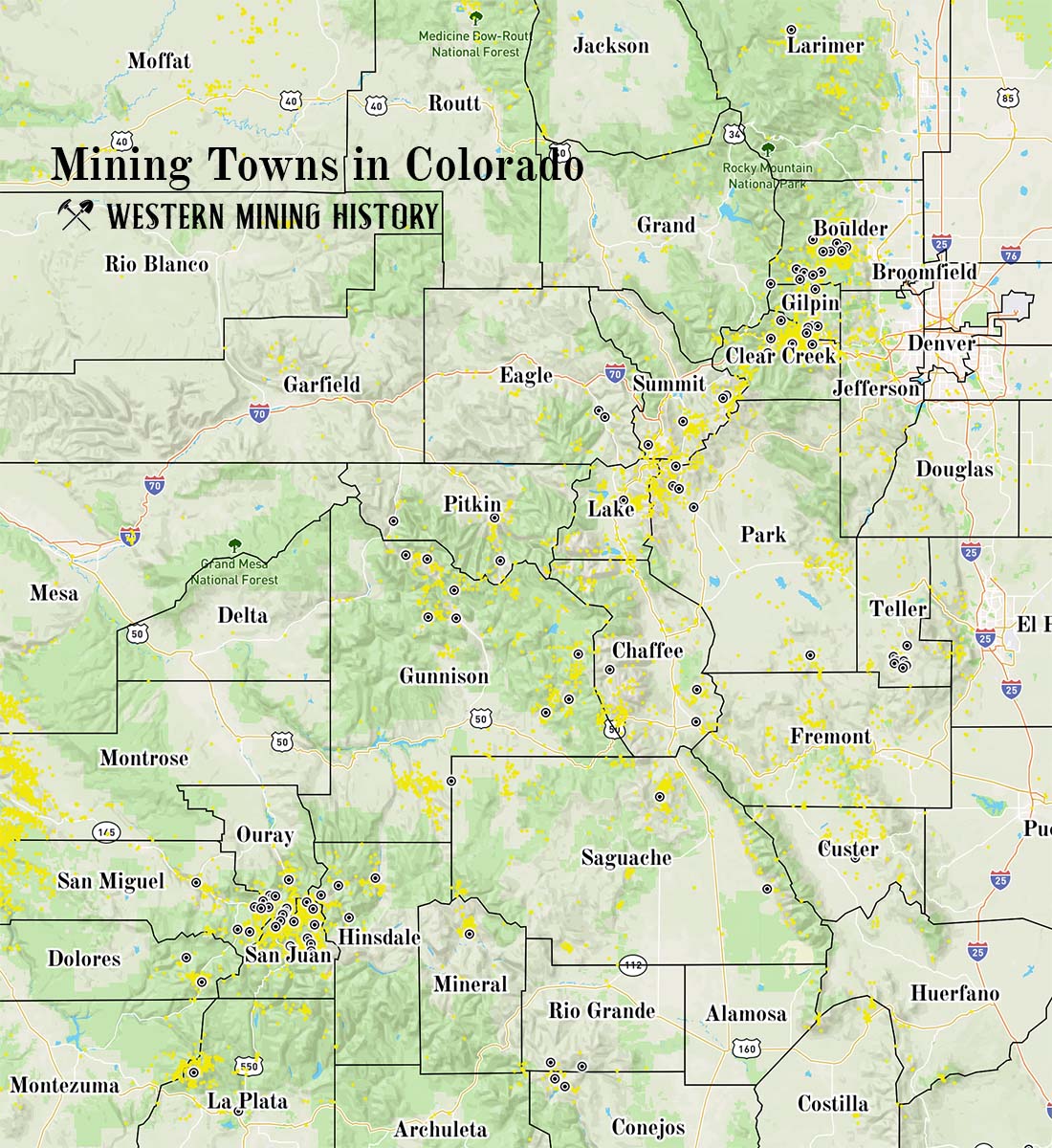
Explore over 100 Colorado mining towns: A tour of Colorado Mining Towns.
Colorado Mining Photos
More of Colorado's best historic mining photos: Incredible Photos of Colorado Mining Scenes.
